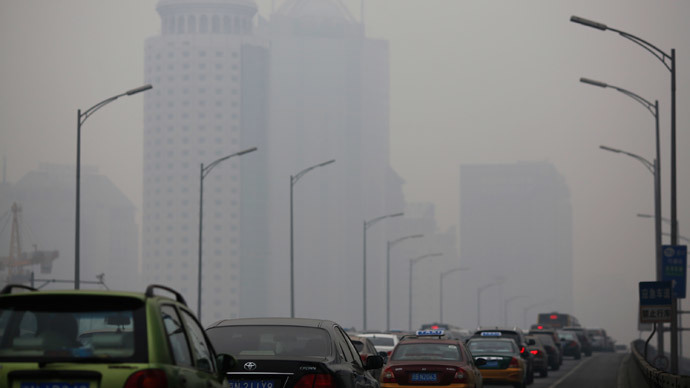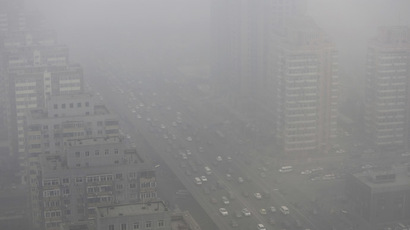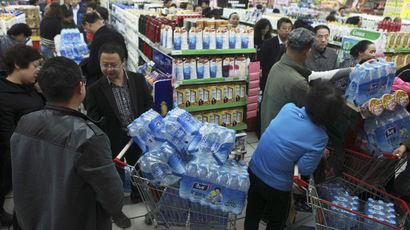Asian pollution fueling storms across Northern Hemisphere – study

Increasing levels of pollution in Asia are strengthening storms over the Pacific Ocean, a study has revealed. Scientists warned these changes could have a radical knock-on effect on climate systems around the world if left unchecked.
A study published in the Proceedings of the
National Academy of Sciences in the US on Monday has identified a
link between increased pollution in Asia and changes in weather
systems over the Pacific Ocean.
Scientists from Texas A&M University drew a comparison
between levels of man-made particles in the air from 1850 to 2000
with an advanced global climate model.
They discovered that an increase in anthropogenic aerosols - fine
particles given off by industrial activities – is likely causing
stronger cyclones in the mid-latitudes of the Pacific, as well as
increased precipitation. According to researchers, these changes
could have a knock-on effect all over the world.
“There appears to be little doubt that these particles from
Asia affect storms sweeping across the Pacific and subsequently
the weather patterns in North America and the rest of the
world,” Renyi Zhang, professor of atmospheric sciences at
Texas A&M University in College Station, said in a press
release.
The study identifies the most common aerosols as sulfates which
predominately come from coal-fired power plants. Other pollutant
particles released by vehicle emissions were also detected. Once
in the atmosphere these particles reflect and absorb sunlight and
can have both a cooling and warming effect on climate zones.
“[Particles] tend to make storms deeper and stronger and more
intense, and these storms also have more precipitation in them.
We believe this is the first time that a study has provided such
a global perspective,” said Zhang. He added “it's almost
certain that weather in the US is changing.”
China is Asia’s Number 1 offender in terms of air pollutions,
with the country’s largest cities regularly enveloped in toxic
smog.
In addition, levels of pollution in Beijing regularly soar above
international safety guidelines. In March, China’s Ministry of
Environmental Protection released a report revealing dire
pollution problems.
It found that the most polluted cities were in the north, where
most of China’s coal-fired power plants are located, as well as
steel manufacturing plants. In addition, the study reported that
air quality standards were only met on 48 days in 2013 in
Beijing.
In an attempt to combat the rising levels of smog, the Chinese
government is set to grant Beijing new rights to close polluting
factories and punish officials, writes the South China Morning
Post. In order to do this the government will push through an
amendment to China’s 1989 Environmental Protection Law.














